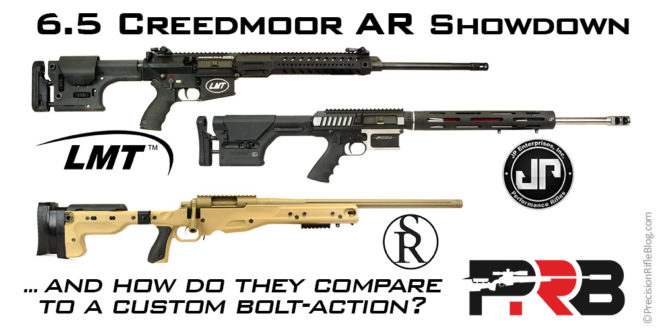I've had a good deal of experience developing loads for precision bolt action rifles but have been very frustrated in developing a load for my newly acquired JP LRP-07. I expected that both shooting and loading for a gas gun would be more complex than for a bolt action rifle and that was actually one of the reasons I decided to buy the JP. But I'm finding I'm spending more of my time trying to develop a load rather than enjoying shooting the rifle. So any help on the following points or any not mentioned would be a help.
Specifics: 6.5CM, 22" barrel; COAL (Sinclair) 2.875"; H4350 powder; Berger 130 OTM bullets; CCI BR2 primers; desired MV range 2750-2850
For my bolt guns I determine powder charge by comparing 0.5 grain increment loads in my desired MV range and looking for the point where there is little vertical dispersion in the groups. I then use the method advocated by Eric Cortina to determine seating depth - find the "jam" depth, back off .020, and then start incrementally decreasing the seating depth by .003 to find a range of 2-3 small groups, then load to the higher end of that range. With the JP, groups are so inconsistent that there is no uniformity of results - one test session may identify several 0.3-.4 MOA groups. If I repeat the same test under same conditions a day or so later, all the groups have changed size!
So:
1) Will changes in lubrication and fouling of the reciprocating components over 25 - 50 rounds alter groups?
2) Should LD be done with gas off to eliminate variables or with the gas system tuned to the approximate MV of the groups being tested?
3) Does an LMOS allow the bolt to open before the bullet leaves the barrel, which is probably not a good thing in terms of small groups?
Thanks for any assistance.
Dave
Specifics: 6.5CM, 22" barrel; COAL (Sinclair) 2.875"; H4350 powder; Berger 130 OTM bullets; CCI BR2 primers; desired MV range 2750-2850
For my bolt guns I determine powder charge by comparing 0.5 grain increment loads in my desired MV range and looking for the point where there is little vertical dispersion in the groups. I then use the method advocated by Eric Cortina to determine seating depth - find the "jam" depth, back off .020, and then start incrementally decreasing the seating depth by .003 to find a range of 2-3 small groups, then load to the higher end of that range. With the JP, groups are so inconsistent that there is no uniformity of results - one test session may identify several 0.3-.4 MOA groups. If I repeat the same test under same conditions a day or so later, all the groups have changed size!
So:
1) Will changes in lubrication and fouling of the reciprocating components over 25 - 50 rounds alter groups?
2) Should LD be done with gas off to eliminate variables or with the gas system tuned to the approximate MV of the groups being tested?
3) Does an LMOS allow the bolt to open before the bullet leaves the barrel, which is probably not a good thing in terms of small groups?
Thanks for any assistance.
Dave



